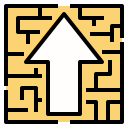Effective Communication Skills for Architects: Turning Ideas into Shared Understanding
Chosen theme: Effective Communication Skills for Architects. Build trust, reduce rework, and energize teams by speaking clearly, listening deeply, and visualizing decisions that everyone can embrace. Subscribe for practical frameworks, stories from real projects, and tools that make collaboration feel effortless.
Transform scattered desires into a coherent brief by paraphrasing, summarizing priorities, and confirming constraints in the client’s own words. Invite them to correct you, then document the agreements visibly so everyone feels heard and aligned from day one.

Visual Storytelling That Aligns Stakeholders
Loose, labeled sketches encourage critique without defensiveness. Trace paper overlays let you test variations quickly while keeping the narrative continuous. When a council once debated massing, a quick hand sketch unlocked a shared solution within minutes.
Use diagrams to explain circulation, daylight, and phasing before glossy renders. Color-code intent, not style. When stakeholders understand the logic behind choices, they feel ownership—making later aesthetic discussions smoother and more productive.
Map the journey from site analysis to final concept with a simple storyboard. Each frame answers one question and sets up the next. Download-ready templates are coming—subscribe now to get notified and contribute your favorite storyboard frames.



Presentations That Win Trust and Decisions
Open with the problem, show the path, then summarize the ask. Keep one idea per slide. Close by revisiting success criteria in the client’s language, reinforcing shared goals rather than showcasing technical prowess alone.
Presentations That Win Trust and Decisions
Vary tempo, pause after key points, and gesture to diagrams, not yourself. Stand where sightlines are strongest and invite a colleague to monitor chat or hands. Practicing together turns a presentation into a team performance.
Presentations That Win Trust and Decisions
Repeat the question, answer concisely, and confirm satisfaction. If a critique lands hard, label the value behind it before proposing alternatives. Share your toughest Q&A moment with us—what did you learn that others should know?

Collaboration Across Disciplines
Define key terms early: tolerance, live load, commissioning, mock-up. Build a glossary in your kickoff deck and keep it visible. Clarity reduces friction and helps new team members ramp up without repeating old misunderstandings.


Navigating Feedback and Difficult Conversations
Use specific, behavior-based observations and propose next steps. Try a simple pattern: context, observation, impact, and invitation. This keeps feedback actionable and keeps relationships intact even under pressure.
Navigating Feedback and Difficult Conversations
Pause, paraphrase what you heard, and ask for one example. Thank the person, even if you disagree. Decide later, respond now with curiosity. Modeling this norm transforms studio culture over time.
Digital and Asynchronous Communication for Busy Teams
Choosing the Right Channel
Match the message to the medium. Use chat for quick checks, email for decisions, and video when nuance matters. If stakes are high, summarize in writing after the call for clarity and record.
Documentation That Remembers for You
Centralize drawings, decisions, and risks in a shared space with version history. Clear naming conventions and short summaries help new contributors onboard and reduce repeat questions that drain attention.
Remote Workshops That Engage
Blend short presentations with collaborative boards, polls, and breakout sketches. Assign roles—facilitator, timekeeper, scribe—to keep energy focused. Tell us your best remote workshop tip and subscribe for our upcoming facilitation guide.
